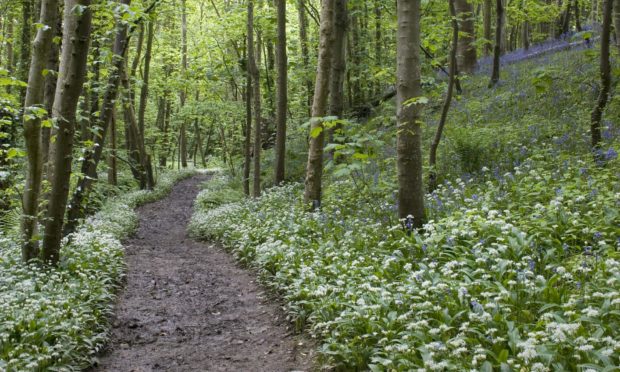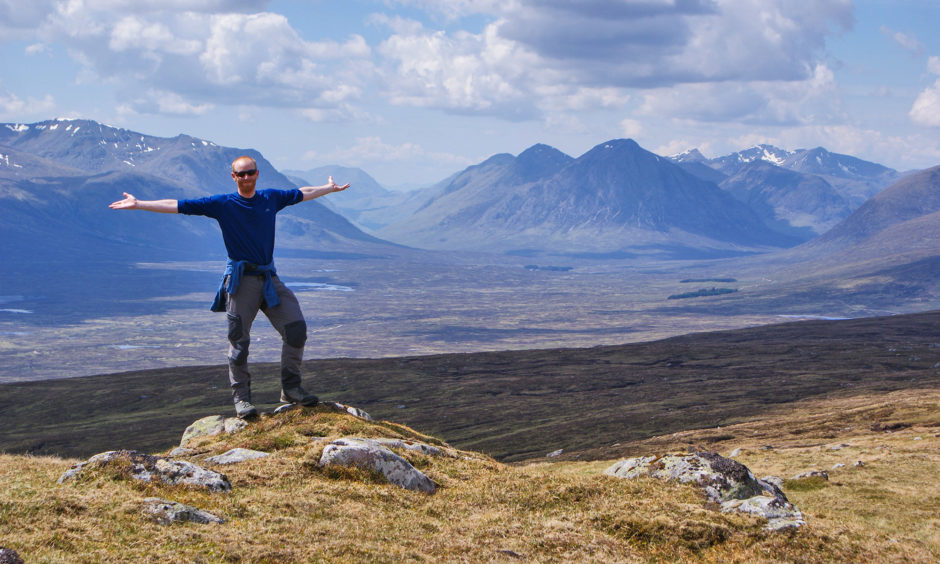It’s a situation most outdoorsy folk will have found themselves in during the pandemic, whether it’s up in the mountains or down in the town.
You’re walking along a path and someone is walking towards you, but the path isn’t wide enough for social distancing. What do you do?
The obvious answer is to step off the path, onto the grass or heather in order to give one another space. You then continue walking off the path until you’re safely past one another, before returning to the path proper. Most likely you’ll have only spent between five and 10 seconds off path, a distance of mere metres, but what impact will even that short distance have on the vegetation underfoot?
As with all our interactions with the environment, individually it will have very little impact from just one person. But scale it up, all of us doing it, all day every day, and “very little” becomes cumulative. A little becomes a lot.
Be aware of your own impact
Path erosion is a perennial problem pretty much anywhere in Scotland but the Covid pandemic has turbocharged it. Partly through path-widening due to social distancing, but also because of the massive increase in outdoors visits.
As a ranger I’ve seen it at my own workplace this past year. By last autumn, the effects of relentless wet weather and an effective doubling or even trebling of visitor numbers year-on-year were easy to anticipate but difficult to alleviate. But we did try.
Record numbers of us are likely to be up in the hills, and they’re going to need all the help they can get
Access legislation (quite rightly) makes it difficult for landowners to close paths, so we instead appealed to visitors via a sequence of light-hearted posters to voluntarily avoid the muddiest grass paths and use the surfaced ones instead, just to let the damaged ones “rest” for a bit.
We definitely saw a change in visitor behaviour, with many people heeding the advice. Of course, many people ignored it completely, but even if only some of our visitors complied with the request only some of the time, it still helped. And for some folk it was the first time they’d actually considered the link between their own individual actions and what happens underfoot. A small spark perhaps, but a spark nonetheless.
This probably all sounds hideously patronising, telling people how to use paths but I promise you, just being aware of the impacts, thinking about your foot placement and what surface you’re walking on, can make a real difference.
For example, if you’re in a group that’s wider than the path, fall behind one another if need be. And even if you’re in a pair and other walkers approach, again, fall behind one another in single file so that you all stay on the path rather than forcing people off unnecessarily. This is especially important on hill paths, where erosion takes hold more quickly due to fragile vegetation, steeper gradients and more intense rainfall.
I’m always mindful of this in the hills, but I admit that during the early pandemic I too was walking along fragile path edges to avoid people. I hadn’t really considered an alternative until the National Trust for Scotland’s path maintenance teams were in the news, explaining the cumulative damage that social distancing had done to mountain paths over the Covid summer.
They appealed to visitors: if you have to step off the path to avoid someone, then rejoin the path as soon as possible or, even better, wait at the path edge until the other person has passed safely. Keep still, then carry on.
Let’s protect the paths that are so important to us
I’ve since adopted that approach wherever I can, but it does feel weird. People stare at you suspiciously, wondering why you’ve stopped when there’s all that nice grass you could be walking over, but you get over that self-consciousness quickly enough.
In reality it adds only a few seconds to my walk for each person I pass, totalling just a few minutes over the course of a day. Not a huge inconvenience by any means, but if you need an extra incentive then I’m sure you’ll appreciate added rests on your way up or down the hill.
Money and resources for path maintenance are hard to come by at the best of times, let alone when normal fundraising channels are disrupted, and paths are going to be more important then ever as we emerge from lockdown this month. Record numbers of us are likely to be up in the hills, and they’re going to need all the help they can get. So for all those places and paths we love so much, keep still and carry on.
Ben Dolphin is an outdoors enthusiast, countryside ranger and former president of Ramblers Scotland


